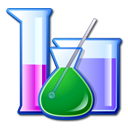That’s True…

Chemistry Is Not Just About Chemicals Or Test Tubes , Molecules Etc.
So..
What Is Chemistry ?… What Is Chemistry All About ?..What’s The Importance Of Chemistry In Every Day Life ?..What Chemistry Deals With ?
Definition of Chemistry :
As the technology advances , as new discoveries and theories takes place so the definition of Chemistry Changes. In general we may define Chemistry as :
Chemistry is
A branch of physical science that studies the composition, structure, properties and change of matter.
Or in simpler words , Chemistry is the study of matter, its properties, how and why substances combine or separate to form other substances, and how substances interact with energy.
Chemistry Deals With :
Chemistry deals with various topics such as , the properties of individual atoms, how atoms form chemical bonds to create chemical compounds, the interactions of substances through intermolecular forces that give matter its general properties, and the interactions between substances through chemical reactions to form different substances etc.
Chemistry As Central Science :
Chemistry is sometimes called the central science because it bridges other natural sciences, including physics, geology and biology. For the differences between chemistry and physics see Comparison of chemistry and physics.
Not Only Chemist…
Many people think of chemists as being white-coated scientists mixing strange liquids in a laboratory, but the truth is we are all chemists.
Doctors, nurses and veterinarians must study chemistry, but understanding basic chemistry concepts is important for almost every profession. Chemistry is part of everything in our lives.
Every material in existence is made up of matter — even our own bodies. Chemistry is involved in everything we do, from growing and cooking food to cleaning our homes and bodies to launching a space shuttle. Chemistry is one of the physical sciences that help us to describe and explain our world.
Importance Of Chemistry In Everyday Life :
Why chemistry is important in our everyday life..This Question clicks in mind when we are taking chemistry as our subject in 11th Standard. Attending Your 1st Day In School you may be given an homework assignment to find an answer to above question.
Have a look here at why chemistry is important.
- Everything is made of chemicals. You are made of chemicals. So is your desk. So your vehicles. So is the sun. Drugs are chemicals. Food is made from chemicals.
- Many of the changes you observe in the world around you are caused by chemical reactions. Examples include changing colors of leaves, cooking food and getting clean.
- Knowing some chemistry can help you make day to day decisions that affect your life. Can I mix these household chemicals? What are safe mosquito repellents? Will my bottled water expire?
Every material in existence is made up of matter — even our own bodies. Chemistry is involved in everything we do, from growing and cooking food to cleaning our homes and bodies to launching a space shuttle. Chemistry is one of the physical sciences that help us to describe and explain our world.
[ Source : livescience.com , wikipedia.org , about.com ]













